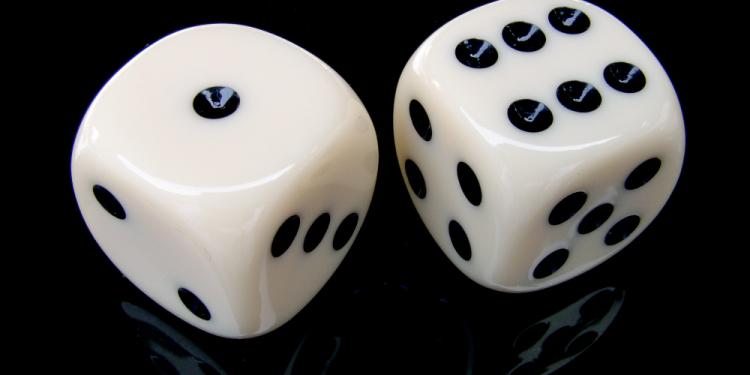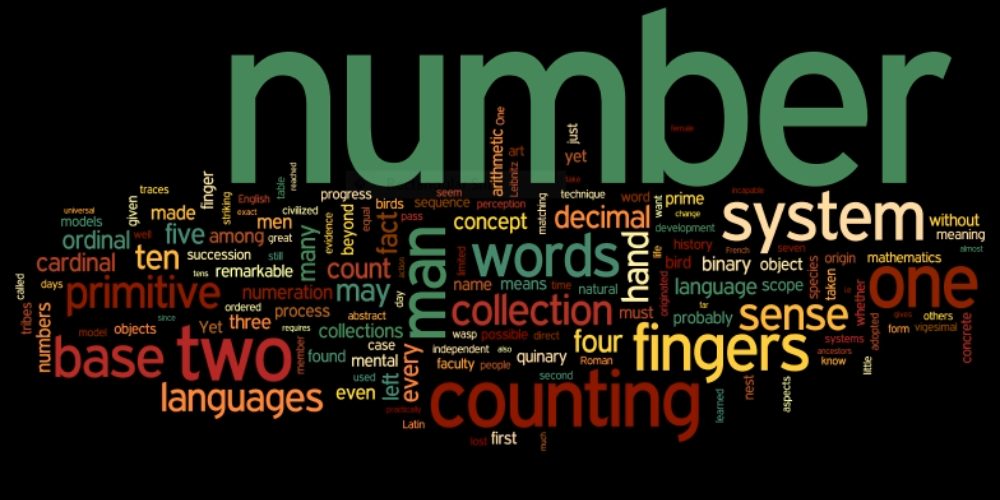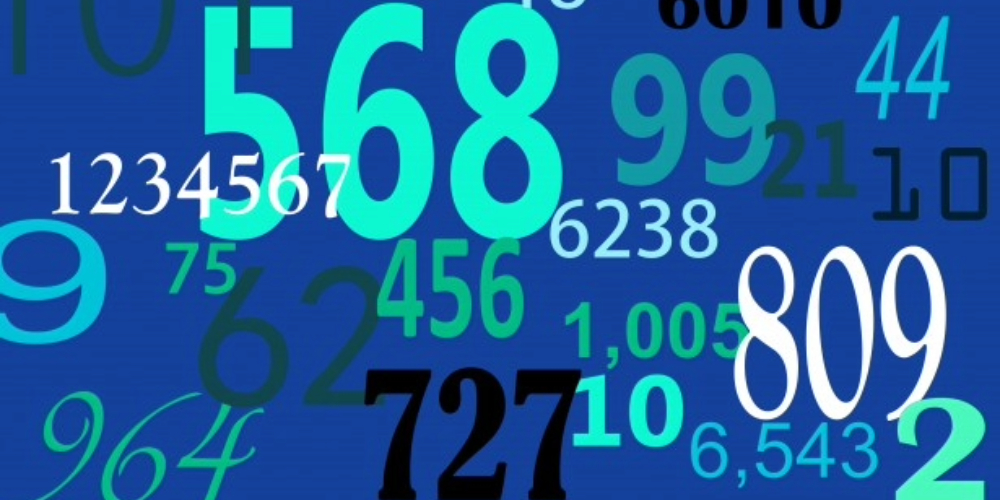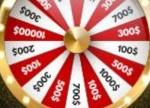Betting Odds and Probability Guide – An In-depth View
Posted: October 2, 2023
Updated: October 2, 2023
In this guide, we review betting odds and probability to help you understand how to form a strategy to win your bets. This guide shows you the difference between American, fractional and decimal betting odds to understand the differences between them and how you can use your understanding of probability to help you win your upcoming bets. Continue reading to learn more about the numbers behind the online betting scene.

If you are new to gambling or a seasoned player that is seeking a breakdown of betting odds and probability, you are in the right place. Placing wagers online may seem slightly confusing at first but with the right guidance, you are sure to find your footing. Have a read through our betting odds and probability guide to understand how online betting works and how to find the best betting odds on the net.
Betting Odds and Probability Guide: An Introduction
Betting is a game of chance, but you may be wondering what is the possibility of a bet paying out. The odds are a great indicator as to how likely a bet is to win, the number offered is calculated by a lot of statistical information that suggests the chances of the specific bet to win.
Of course there is no way to know beforehand which bets will win, but bettors can use the betting odds, whether they are decimal or fraction, to find out which bets have a higher chance of winning and which are longshots. At online sportsbook sites in the UK, you will find plenty of bookies that offer odds on the hottest and most popular sports and tournaments.
Implied Probability
Implied probability is a percentage that shows how likely a bet is to win based on the odds of that specific bet. As well as a showing a percentage of the chance a bet has to win for new punters who are trying to pick their winning bets, it can also be used by punters who use systems to determine which bets they want to place and how much they want to stake on them.

Probability can be calculated as a number between 0 to 1, and is then multiplied by 100 to become a percentage to show what percentage individual bets have of winning. When a number is close to 1, it means that the bet has a higher chance of winning, but numbers can be as low as 0.001, which translates to a mere 0.1% chance of winning.
Decimal Odds
With decimal odds, bettors can calculate how much they stand to win by multiplying the odds against how much they stake. This makes it quite easy for bettors to understand and use, but how do these odds translate to probability?
To find out the probability of a single bet, the formula is the following:
- Divide 1 by the decimal odds, then multiply by 100 to get the percentage.
Here are some examples of how bettors can find the percentage of how likely different decimal odds are to win
- Odds of 2.0 have a probability of 1/2 x 100 = 50%
- Odds of 1.5 have a probability of 1/1.5 x 100 = 66.7%
- Odds of 2.5 have a probability of 1/2.5 x 100 = 40%
- Odds of 4.0 have a probability of 1/4 x 100 = 25%
- Odds of 10.0 have a probability of 1/10 x 100 = 10%
Fractional Odds
Fractional odds differ from decimal odds in that they show how much the potential profit of a bet is rather than the full return. In bets such as 3/1 or 4/1, where there bettor stakes €1, they stand to win €3 and €4, although the full returns will be €4 and €5 because the original stake will also be returned.
When it comes to finding out the probability of fractions, bettors need to take the extra step of adding +1 to the fractional odds to represent the original stake. The formula for calculating the probability in fractional odds is otherwise almost the same as the formula for calculating the decimal odds.
1 divided by the fractional odds plus 1 (for the original stake), multiplied by 100.
- Odds of ½ have a probability of 1 / (½ + 1) x 100 = 66.7%
- Odds of ⅓ have a probability of 1 / (⅓ + 1) x 100 = 75%
- Odds of 2/1 have a probability of 1 / (2/1 + 1) x 100 = 33%
- Odds of 5/1 have a probability of 1 / (5/1 + 1) x 100 = 16.7%
- Odds of 10/1 have a probability of 1 / (10/1 + 1) x 100 = 9.1%
How Can I Use Probability
When placing sports bets, such as tennis or football, most punters will have their own opinion about who will win the next game. As the odds are calculated by a mathematical model using statistics from previous games, punters who have a good knowledge of the game may have some insight that may help them to make winning bets.
It is important to note that the implied probability comes directly from the odds offered so bettors should not always avoid the bets with lower percentages. There may be games where a team is highly unlikely to win a match just because they have a key player injured or they have recently dipped in form. While it is true that the actual chances of the team will not be helped by a poor run of form, it can also be a source of inspiration for teams who do not want to give up and will do anything they can to turn their luck around.
When betting on sports such as horseracing, and you do not want to do any research, the betting odds will be a great indicator for which horses have the best chance of winning the race. Bettors can use this as a good way of determining how much they want to stake from their overall budget.
In the end the best way of finding out which bets have the best odds are to try to look at the implied probability of bets and then try to determine what percentage you would give the same bet. After all, in the end implied probability will not play a factor in the following sporting game or match, and anything can happen.
Betting Odds Explained
Betting on sports can be hugely fun and there are many different types of bets available on different sports. There are several bets that can be found in various forms over many different sports, as well as bets that are specific to the sport and cannot be found elsewhere.
This allows bettors the freedom to choose what kind of bets interest them the most. To understand how to place bets, it is important to know exactly how betting odds work.
What Are Betting Odds
It is quite simple to understand how betting odds work, each bet will have odds offered. In a tennis match for example, there may be a bet such as which player will win the match. There will be odds offered on both players. If these are in the decimal format, the numbers may look like 1.2, 1.3, 1.4 or even up to 4.2, 4.3 and so on.
Decimal Odds
These odds can be multiplied against the wagered stake to see how much they stand to win. A bet of €10 on a tennis player to win at odds 1.3 will offer winnings of €13. Alternatively, placing a bet on a tennis player whose odds are 4.2 will mean the €10 bet can win €42.
When the bookie places short odds, such as 1.2, 1.3, 1.4 and so on, it is because the player is favoured to win. If the odds are longer, this means that the player is expected to lose, meaning that there is a higher chance of them losing than winning. The sportsbook calculates the odds based on the player’s standings in the tennis world rankings, the player’s last games, their track record on the type of field that the match is played on, and many more factors. All bets over the different sports will be calculated in similar ways, whether it’s esports, horse racing, football, surfing or more.

If the odds appear in a format that is not the decimal format, they can be set to decimals as they are the easiest to understand. Alternatively, there are American odds and fractional odds that can also be useful to understand.
Fractional Odds
With fractional odds, there is a number shown, such as 5/1 or 8/9, which both stand for how much the bet can win, without the return of the original stake. This is the major difference between decimal odds and fractional odds. In the scenario where the odds offered are 5/1, a €10 bet will win €50 + €10 from the original stake. In the scenario where the odds are 8/9, a €10 bet will win €8.89 + €10 from the original stake.
The mathematics behind calculating with fractions may take slightly longer as they need the punter to convert the fractions into decimals, but there are some bettors who prefer to use the fractional system and have played enough to recognise how much they can win from certain fractional odds.
American Odds
The American odds system is the most unique, as it does not use decimals or fractions, but instead shows much a player can win if they place €100, or how much they need to place on a favourite to win €100.
American odds are presented with two numbers, such as -110 and +230. The negative value has the shorter odds, and the way it works is that punters need to place €110 to win €100. The positive odds are bets on the longshot, where a punter can win 230 if they place a stake of €230 (and their original stake will be returned).
To put this into an example, a €10 bet on the -110 bet will win €9.09 + €10 from the original stake. The way this can be calculated precisely is to divide 100 by the amount of the negative bet, and then add 1 on the end to get the precise decimal odds. Placing a bet of €10 on the positive odds will mean the punter stands to win €23 + €10 from the original bet.
Parlays
Parlays are used to increase betting odds. When a punter wants to place multiple bets, they can combine these into a parlay which means that the odds from each bet are multiplied against each other for much longer odds. The bets placed in the parlay have to be able to work together without contradicting each other.
In the decimal format, here is an example with a football bet of how a parlay can work.
- Brazil to win vs Argentina at odds 2.2
- Neymar to score in the match at odds 2.1
- Brazil to keep a clean sheet at odds 3.2
The bets in the parlay do not contradict each other, as Brazil can win against Argentina, with Neymar scoring and Brazil keeping a clean sheet. If the punter places bets of €10 on each of the individual bets, they would win €22 + €21 + €32, for a total of €75.
In a parlay, the odds would be multiplied together, generating a much higher odds of 2.2×2.1×3.2 = 14.784, meaning the same bet of €30 can win €443.52.
The only risky part of parlays is that all bets need to win for the parlay to pay out. Punters can choose to create parlays with many different bets, over different matches or on the same match, but they all need to win for the punter to win big.
Parlays are hugely popular amongst sports bettors, and once punters find the bets that they have the most success with, they usually try to place these into parlays to win big from small stakes.
Fractional Odds Or Decimal Odds
It can be quite confusing to newcomers to decide which type of odds they want to use, whether it is fractional or decimal odds.

Both types show the same odds but some people find the fractions easier to use, whilst others may prefer to use decimals.
Fractional Odds Guide
These are mostly used in Great Britain, and also in many land based sportsbooks. Fractional odds are often seen as the traditional type of odds, and for people in the UK these odds may be set in by default but there is an option to change to decimal if it is more convenient. These odds show how much profit a punter can make from a bet with fractions, so if a bet had odds of 7/1, this means that a bet of €1 can make a profit of €7, with the addition of the stake being returned, for a payout of €8. Bets such as 7/2 and 9/1 are called “against” odds, because these are longer odds bets. When speaking, these odds are read out as “odds seven to two” and “odds nine to one”.
When the odds are reversed, such as 1/4 or 2/9, these are called odds on. These are shorter odds bets that can usually be found on the favourites in a sporting event. When speaking, these odds read out as “odds four to one on” and “odds two to nine on”
Examples
To show how much each of the examples could win,
- If €2 was placed on odds seven to two, the bettor would make a profit of €7. With the return of the original stake, they will receive a return of €9.
- If €10 was placed on odds nine to one, the bettor would win a total of €100, which is €90 in profit added to the original stake of €10.
- In the odds on, if a bet of €5 was placed on four to one on, then the punter would make a profit of €1.25, and with their original stake returned they would receive €6.25.
- If a bet of €10 was placed on odds two to nine on, the total winnings would be €12.22.
Decimal Odds Guide
Decimal odds are more common in online sportsbooks because punters may find them slightly easier to understand. Here, the odds do not show the profit but instead show the whole value of how much a punter can expect in returns. Odds such as 3.2, 5.3, and so on can be quite simple to calculate because the punter needs to multiply their stake against the odds to know how much they can win.
If a bet of €12 was placed on odds 3.20, then the potential winnings would be €38.40, and to know how much this would be in profit, the bettor would need to subtract the original stake from the winnings, showing a profit of €26.40.

One way decimal fractions are easier to read than fractions, is when there are difficult fractions such as 16/7, 23/11, and 13/9, which may take some practice to spot which is the largest and which is the smallest, but with decimal odds these would read out as 3.285, 3.09, and 2.44. With the decimals it is instantly recognizable to punters which odds is the longest and which is the shortest.
Which Odds Type Is Better For Me
With online sportsbooks, the decimal odds are far more popular than the fractional odds. They are easier to understand especially when the stakes are either €1, €10, €100 and so on. The multiplication can be done in head and is far more straightforward than using fractions.
Despite this, there are many land bookies in the United Kingdom that use fractional odds, and they are useful to learn how to use. When the odds on horses are announced at a horseracing bookie, it is definitely an advantage to know which are the odds on and which are the odds against.
If punters may bet outside of the online sportsbook world, then the chances are they may have to learn at least some of the basics about fractional odds.
At the end of the day, the choice of which odds to use are purely up to the bettor, and though the fractional odds may sound a bit confusing at first, especially with the more complicated fractions, punters can learn how to use them relatively quickly, and then they will never struggle if they encounter any physical bookmakers at any events. If punters do opt for decimal odds then they will not have to spend any real time learning how much they can win as they will be able to do the quick arithmetics and figure out how much they can profit directly.
The Bottom Line
Now that you have read through our complete betting odds and probability guide, we hope that you have a better understanding of how to use odds and the differences between the types. As mentioned above, the three main types of betting odds include decimals, fractions and the American style. If you want to explore these betting odds, feel free to take a look at our online sportsbook news in the UK page for the latest and hottest upcoming things to bet on with a selection of odds included.
Click here to try the best odds at bet365 Sportsbook












